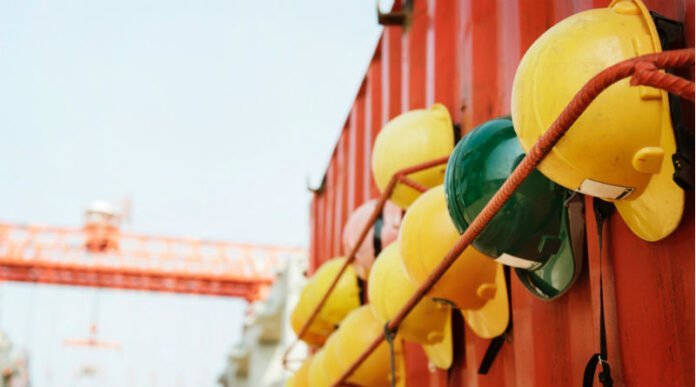High wages and an educated labor pool may be indicators of safer construction worksites. That’s according to an analysis done by John Mendeloff, professor of public affairs at the University of Pittsburgh’s Graduate School of Public and International Affairs, and Wayne Gray, professor of economics at Clark University and executive director of the Boston Census Research Data Center.
States where wages were 20% higher had construction fatality rates that were 1.2 times lower than other states, according to the professors. Education is also connected to lower fatalities on construction jobsites; in states where 10% or more of construction workers had a high school education, fatalities were 2.1 times lower.
RELATED: How to Design Safety Training Materials Workers Will Read
Mendeloff and Gray wondered about the role public policy played in these fatalities, and how policy could be manipulated to reduce the rate of fatalities around the country. For their analysis, they considered the effect that enforcement activity by the Occupational Safety and Health Administration, and by states operating an OSHA-approved state plan, have on fatal injuries.
“This is pretty important because obviously if we can reduce the high-rate states down to the low-rate or even the middle, we’d be able to save hundreds of deaths each year,” Mendeloff said on a webinar in January hosted by the Center for Construction Research and Training (CPWR).
More inspections were also tied to lower fatality rates. The analysis found that when 9% of workplaces were inspected, compared to 6% of workplaces, fatalities fell be a factor of 0.4. Gray noted a “surprising and unexpected result on penalties per inspection,” where a higher penalty-per-inspection rate was associated with a higher fatality rate.
“It’s conceivable that … having lots of hazards [on a jobsite] might be associated with higher fatalities and higher penalties, but we haven’t really delved into that,” he said.
Some other factors that have a less surprising impact on fatality rates:
- States where heavy construction accounted for a lower percentage of construction had lower fatality rates.
- Larger firms and states with higher employment growth or an older workforce experienced higher fatality rates.
State plans
The report found that nonfatal injuries are negatively correlated with fatal injuries in construction.
“In general, states with high injury rates have low fatality rates and vice versa,” Mendeloff said. “Essentially, there’s bad reporting in some states, and those states, not coincidentally, also happen to be the ones that don’t do a very good job of preventing injuries.”
In some states, workplace safety programs are enforced by an OSHA-approved state plan, rather than by OSHA itself. Those plans must be at least as effective as the federal OSHA program, and states may receive up to 50% of their funding for the program from OSHA.
The analysis found states with OSHA-approved state-operated health and safety plans had fewer fatalities. Although Colorado is not one of the 28 states with an OSHA-approved state plan, it was in the 10 states with the lowest construction fatalities. Between 1994 and 2014, construction fatalities ranged from about six or seven deaths per 100,000 workers in states like Washington, Wisconsin and Arizona, to 18 or 20 in Arkansas and Mississippi.
Of the OSHA plan states in the top 10, only Wisconsin had a lower fatality fate than Colorado, which rated seventh overall.
Gray and Mendeloff’s data covered the period between 1994 and 2014. More recent data show that construction fatalities in Colorado are on the upswing. Although total workplace deaths in Colorado fell slightly in 2017, construction deaths increased by 58%, according to the Colorado Department of Public Health and Environment.
Gray noted that it’s not clear whether the difference in success rates between state plans and OSHA plans is due to different inspection practices or long-standing differences that pre-date OSHA enforcement.
The analysis compared NIOSH data from 1983-1985 to data from 1993-1995 and found that construction fatality rates in states with a state-operated plan declined more than OSHA states.
“They were already lower,” Mendeloff acknowledged, “but they became still lower during this period.”








